Thorsten Buss
CaloChallenge 2022: A Community Challenge for Fast Calorimeter Simulation
Oct 28, 2024
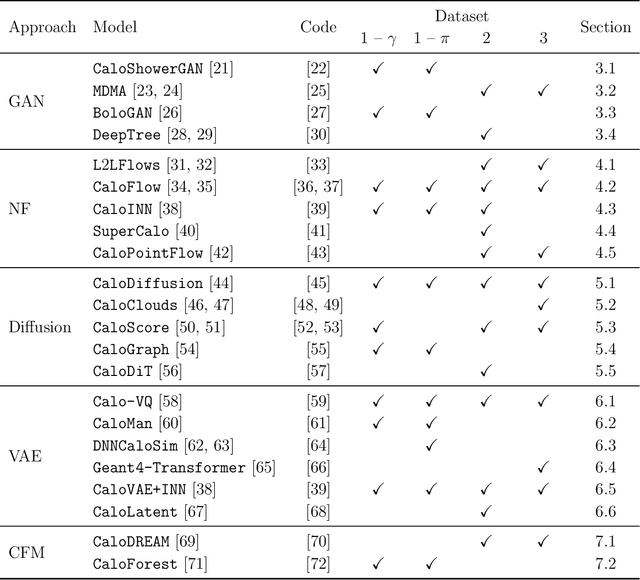
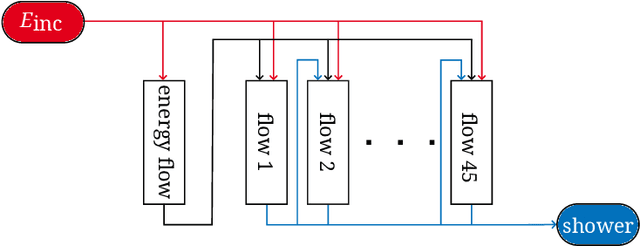
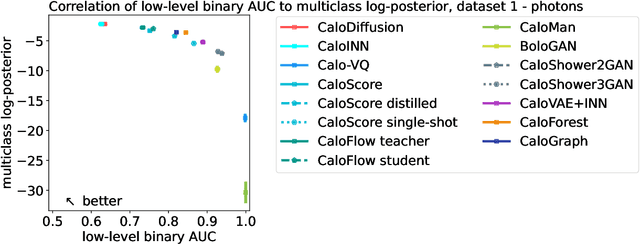
Abstract:We present the results of the "Fast Calorimeter Simulation Challenge 2022" - the CaloChallenge. We study state-of-the-art generative models on four calorimeter shower datasets of increasing dimensionality, ranging from a few hundred voxels to a few tens of thousand voxels. The 31 individual submissions span a wide range of current popular generative architectures, including Variational AutoEncoders (VAEs), Generative Adversarial Networks (GANs), Normalizing Flows, Diffusion models, and models based on Conditional Flow Matching. We compare all submissions in terms of quality of generated calorimeter showers, as well as shower generation time and model size. To assess the quality we use a broad range of different metrics including differences in 1-dimensional histograms of observables, KPD/FPD scores, AUCs of binary classifiers, and the log-posterior of a multiclass classifier. The results of the CaloChallenge provide the most complete and comprehensive survey of cutting-edge approaches to calorimeter fast simulation to date. In addition, our work provides a uniquely detailed perspective on the important problem of how to evaluate generative models. As such, the results presented here should be applicable for other domains that use generative AI and require fast and faithful generation of samples in a large phase space.
Convolutional L2LFlows: Generating Accurate Showers in Highly Granular Calorimeters Using Convolutional Normalizing Flows
Jun 03, 2024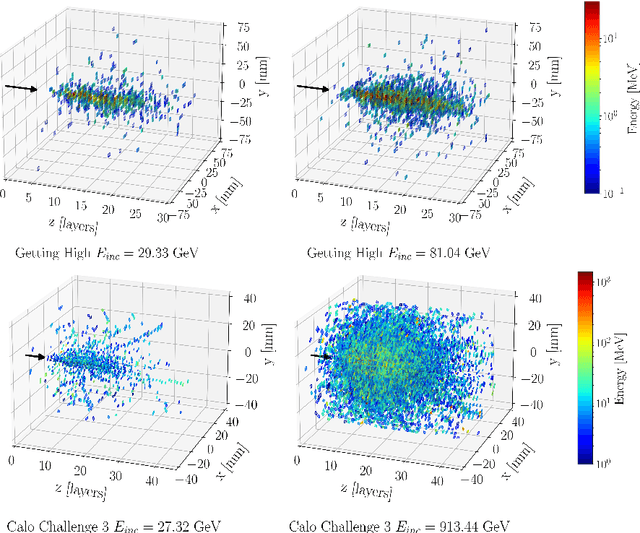

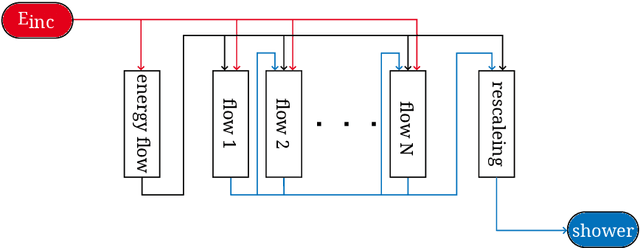
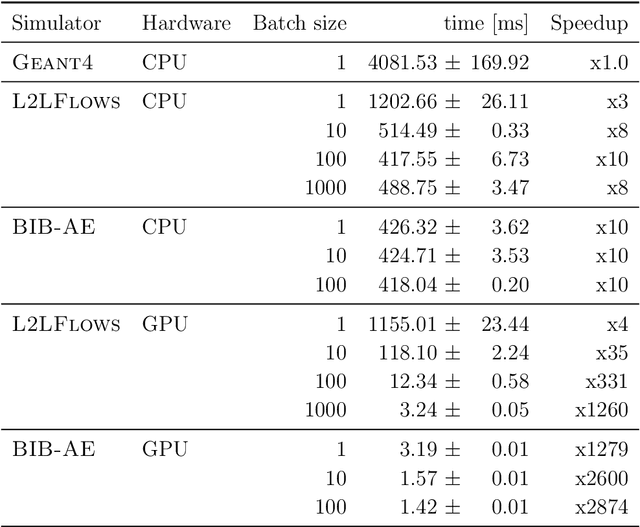
Abstract:In the quest to build generative surrogate models as computationally efficient alternatives to rule-based simulations, the quality of the generated samples remains a crucial frontier. So far, normalizing flows have been among the models with the best fidelity. However, as the latent space in such models is required to have the same dimensionality as the data space, scaling up normalizing flows to high dimensional datasets is not straightforward. The prior L2LFlows approach successfully used a series of separate normalizing flows and sequence of conditioning steps to circumvent this problem. In this work, we extend L2LFlows to simulate showers with a 9-times larger profile in the lateral direction. To achieve this, we introduce convolutional layers and U-Net-type connections, move from masked autoregressive flows to coupling layers, and demonstrate the successful modelling of showers in the ILD Electromagnetic Calorimeter as well as Dataset 3 from the public CaloChallenge dataset.
 Add to Chrome
Add to Chrome Add to Firefox
Add to Firefox Add to Edge
Add to Edge